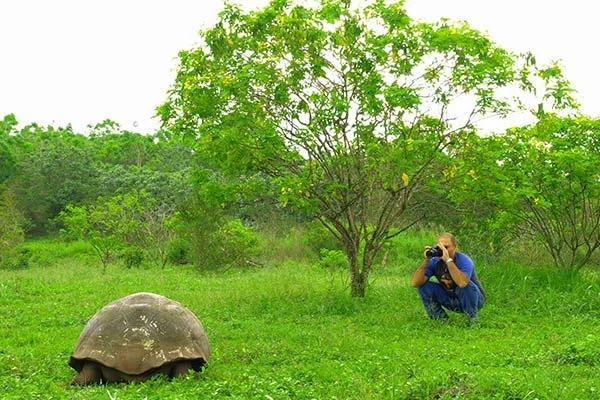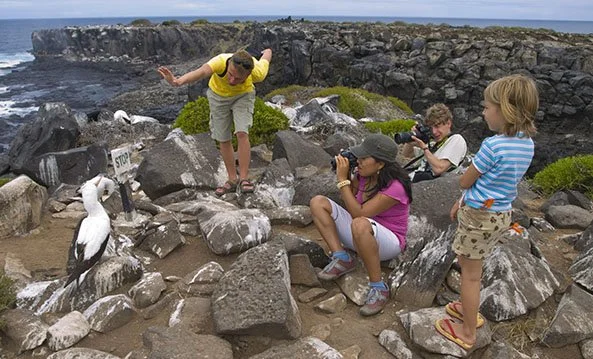
Different types of Cacti present in the Galapagos Islands
Arid conditions prevail in the Galapagos Islands archipelago and in the Galapagos dry area, it is common to find drought-resistant dry area flora. Much of the landscape is harsh and dominated by this type of vegetation. On many Islands, you will only find a dry zone and a coastal zone.
In the dry inland portions of the Galapagos Islands, the most common plant is the Cactus. These succulents, able to store water in their stems and leaves, thrive in hostile climates and during times of drought. Most cacti have spines, which have evolved from leaves. The spines are a fundamental part of the Cacti, used to guard against grazing animals making the plant difficult to chew, offer shade keeping the internal temperature of the plant down, and it channels any rainwater towards the base of the plant. The waxy coating that covers the skin of the cactus known as the glaucous bloom reduces evaporation by the plant by holding in moisture. Leaf-like stems known as pads store and conserve moisture and works as photosynthetic organs for the cacti.
Endemic cacti in the Galapagos Islands include the Lava Cactus, Candelabra Cactus, and the species of Opuntia (Prickly Pair) found in the Galapagos.
Frequently asked question about Galapagos cactus
Can cactus survive without direct sunlight?
What are the health benefits of cactus?
Irritable pear cactus– or also referred to as nopal, opuntia and other names– is advertised for dealing with diabetes, high cholesterol, obesity and also hangovers. It’s also touted for its antiviral and anti-inflammatory residential or commercial properties.
What is the difference between a cactus and a succulent?
Do cacti grow bigger?
Some cacti grow truly fast. If they stay in a too-small pot, the cactus can come to be origin bound. The cactus will certainly quit expanding and eventually dies. That’s why they need to be transplanted as soon as in a while to a larger pot to keep on expanding.
Does cactus juice make you hallucinate?
Mescaline is a psychedelic hallucinogen gotten from the small, spineless cactus Peyote (Lophophora williamsi), the San Pedro cactus, Peruvian torch cactus, and various other mescaline-containing cacti. It has an impact that is similar to LSD or psilocybin (magic mushrooms), other hallucinogenic drugs.



